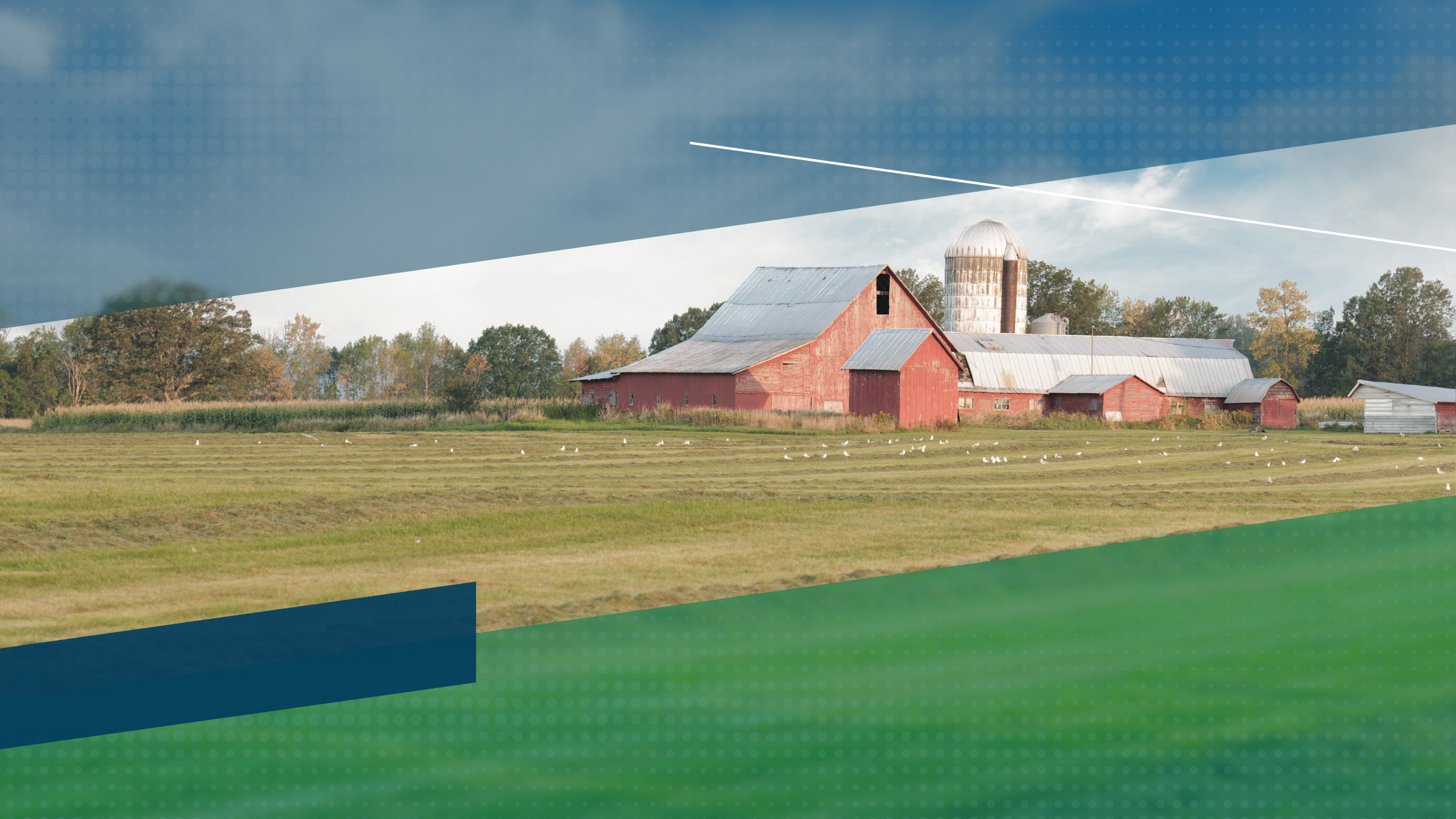Fourth quarter agricultural financial conditions declined slightly, according to the results of the Minneapolis Fed's (November 2001) agricultural credit survey. Farm income fell somewhat from the third quarter and significantly from the same period last year. Producers slightly reduced loan repayments and increased loan extensions. Overall, compared with the third quarter, household and capital spending decreased and the proportion of farm customers at their debt limit declined. Meanwhile, interest rates are down from last quarter, while land prices continue to increase.
Farm income and spending
Overall farm income and spending decreased. While Montana producers continue to struggle, South Dakota enjoyed somewhat more favorable conditions. About half the respondents reported below-normal profits compared with 36 percent in the fourth quarter of 2000. Continued drought conditions in Montana and reduced prices for cattle have hurt producers as 70 percent of the state's poll respondents reported below-average income. However, South Dakota bankers described favorable conditions, with 54 percent reporting average to above-average farm income. "Extremely thankful for higher-than-average yields and significant [loan deficiency payments] payments," commented a South Dakota lender. Chart
Overall farm household spending was down slightly. Twenty-nine percent of district agricultural lenders reported below-normal household spending compared with 24 percent last quarter and 27 percent in the fourth quarter of 2000. Household spending varied across the district: Only 15 percent of North Dakota lenders reported below-average household spending compared with 44 percent of Minnesota lenders. Capital spending remained depressed as 56 percent of respondents indicated below-average capital spending this quarter compared with 52 percent last quarter. "They have tightened their belts and have not been buying machinery unless it is needed in their operations," said a North Dakota banker. Only 30 percent of Montana lenders indicated average or above-average capital spending, compared with 58 percent of South Dakota respondents. Chart
Land values, collateral and interest rates
"Land values continue to increase, despite incomes not supporting price," commented a South Dakota banker. Cropland prices increased over last fall's prices from an average of 4 percent in North Dakota to 10 percent in Montana. In addition, pasture land price increases ranged from an average of 5 percent in Wisconsin to 8 percent in South Dakota over those of a year ago. Collateral levels remained normal, as 82 percent of lenders noted average levels of required collateral. Meanwhile, interest rates for farm loans have decreased nearly 200 basis points from a year ago.
Farm loan volumes
Despite lower interest rates, demand for most loans remained at normal levels, although machinery and real estate loan demand weakened. Livestock and other operating loan volumes were about average over the last three months, as 71 percent and 79 percent of lenders, respectively, described normal loan demand. Intermediate-term loans were about average, with 65 percent of lenders noting normal loan activity. However, respondents reported that demand for machinery loans and real estate loans decreased: 50 percent and 41 percent, respectively, noted below normal-loan activity in these two areas compared with 44 percent and 38 percent, respectively, last quarter.
Agricultural Loan Volumes
Percent of respondents, fourth quarter 2001.
| Feeder Livestock | Operating | Machinery | Real Estate | |
|---|---|---|---|---|
| Significantly higher than normal | 0 % |
0 % |
0 % |
1 % |
| Somewhat higher than normal | 4 % |
15 % |
3 % |
15 % |
| Normal | 71 % |
79 % |
47 % |
43 % |
| Significantly lower than normal | 15 % |
4 % |
44 % |
29 % |
| Somewhat lower than normal | 10 % |
2 % |
6 % |
12 % |
Bank credit conditions and liquidity
Bank credit conditions and liquidity remain normal. Average levels of loan repayments were described by 72 percent of lenders. Normal levels of renewals and extensions were noted, as 77 percent of respondents indicated average levels. The percentage of farmers at their debt limit edged down to 27 percent compared with 28 percent last quarter. Availability of funds was not a problem: Only 1 percent of lenders reported refusing to make a loan due to shortage of funds.
Bank Credit Conditions
Percent of respondents, fourth quarter 2001.
| Available Funds | Loan Repayment | |
|---|---|---|
| Significantly higher than normal | 26 % |
1 % |
| Somewhat higher than normal | 20 % |
7 % |
| Normal | 51 % |
72 % |
| Significantly lower than normal | 2 % |
19 % |
| Somewhat lower than normal | 1 % |
1 % |
Outlook
Lenders are pessimistic about the future of their farm customers. "Livestock prices sliding lower and break even appears to be the target at best," said a South Dakota banker. Sixty percent of respondents expect profits to be below normal over the next quarter. Montana respondents were the most negative, as nearly 90 percent expect below-normal profits compared with half the South Dakota respondents. The outlook for capital spending was nearly the same across all states: An average of 65 percent of lenders anticipated below-normal levels.
| Fixed Interest Rates* | ||||
|---|---|---|---|---|
| Feeder Livestock | Operating | Machinery | Real Estate | |
| 4th Q '00 | 10.3 |
10.4 |
10.3 |
9.6 |
| 1st Q '01 | 9.8 |
9.8 |
9.7 |
9.1 |
| 2nd Q '01 | 9.2 |
9.3 |
9.2 |
8.6 |
| 3rd Q '01 | 8.6 |
8.9 |
9.0 |
8.5 |
| 4th Q '01 | 8.0 |
8.2 |
8.0 |
7.6 |
| * Average of reported rates in mid-November 2001. | ||||
Each quarter, the Federal Reserve Bank of Minneapolis surveys agricultural bankers in the Ninth Federal Reserve District, which includes Montana, North Dakota, South Dakota, Minnesota, northwestern Wisconsin and the Upper Peninsula of Michigan. In mid-November, 86 bankers responded regarding conditions during the fourth quarter 2001.





